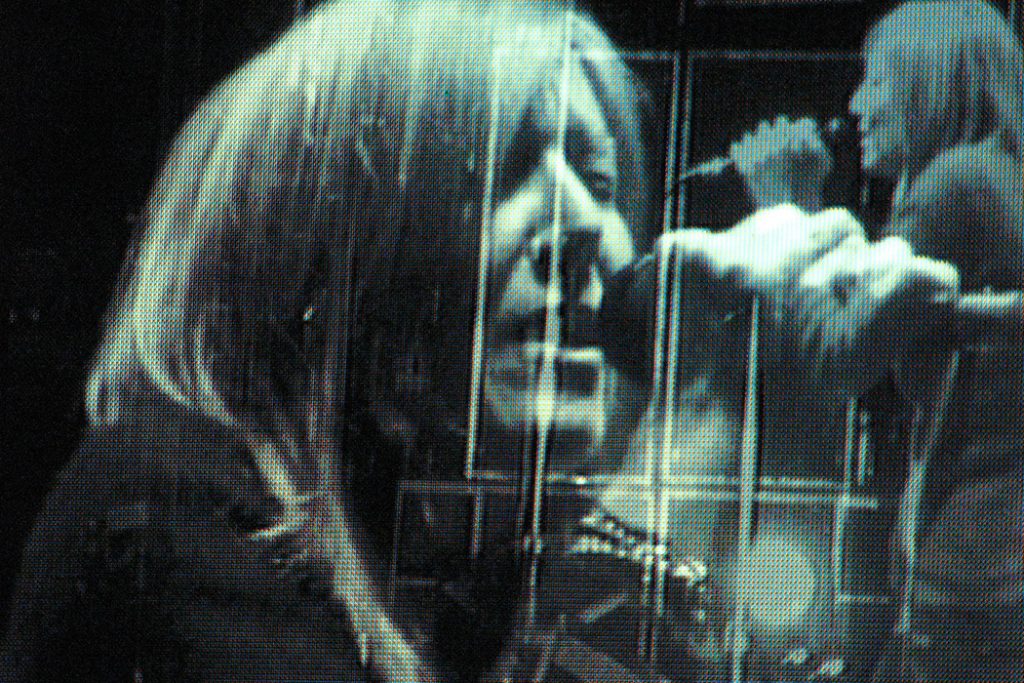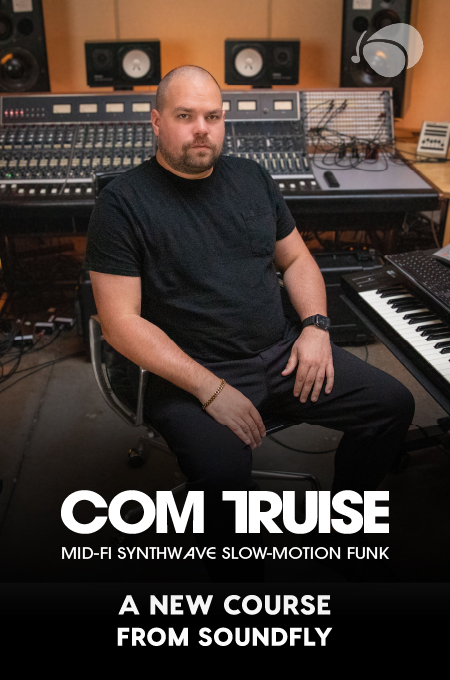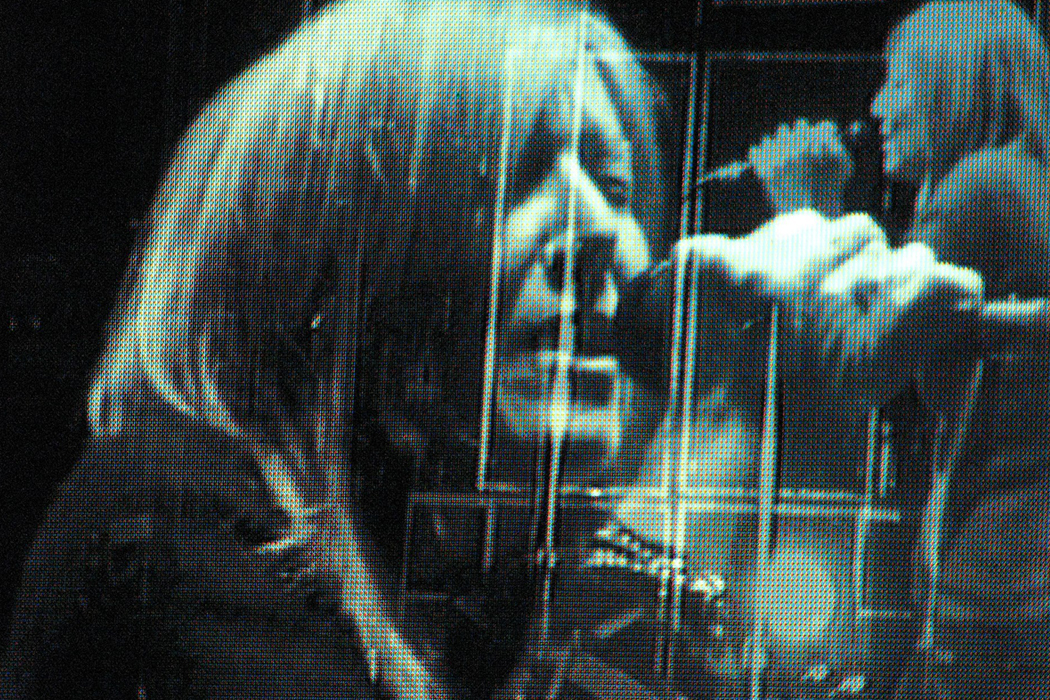
+ This is an excerpt from Soundfly’s online course, The Creative Power of Advanced Harmony. To access the rest of this lesson, plus hundreds of videos and tutorials on theory, songwriting, composing, beat making, mixing and more, subscribe here.
In diatonic harmony, we usually only have seven different notes to choose from in our progressions. In some ways, that can be like painting using only primary colors.
Embracing chromaticism gives us the full keyboard at our disposal. But having that much choice can also drive you crazy. You can literally play any note together; so, how will you ever choose?
One answer to that question is to see how other creative artists approach chromatic movement in their music, and today we’re zooming in on Portishead. Let’s check it out.
Chromatic Voice Leading
There are a lot of cool sounds you can get from chromatic melodies and bass lines, and one way to bring that chromatic movement into stark relief is to keep much of your harmony around them the same. This is something that Portishead does masterfully in their track “Glory Box,” off of Dummy.
This song is all about that bass line, which descends stepwise down from the I– chord to ♭VIMaj7, a progression that would be pretty standard except for that one little chromatic twist.
The inherent minor-ness of the song is immediately apparent and invokes sorrow and sadness. The tragedy of the bass line alone transcends its musical context to tell its own story. However, combined with the minor chord voicings of the electric piano and the bluesy riffs of the strings and vocals, a story unfolds around this semi-chromatic riff with a blues as deep as any other.
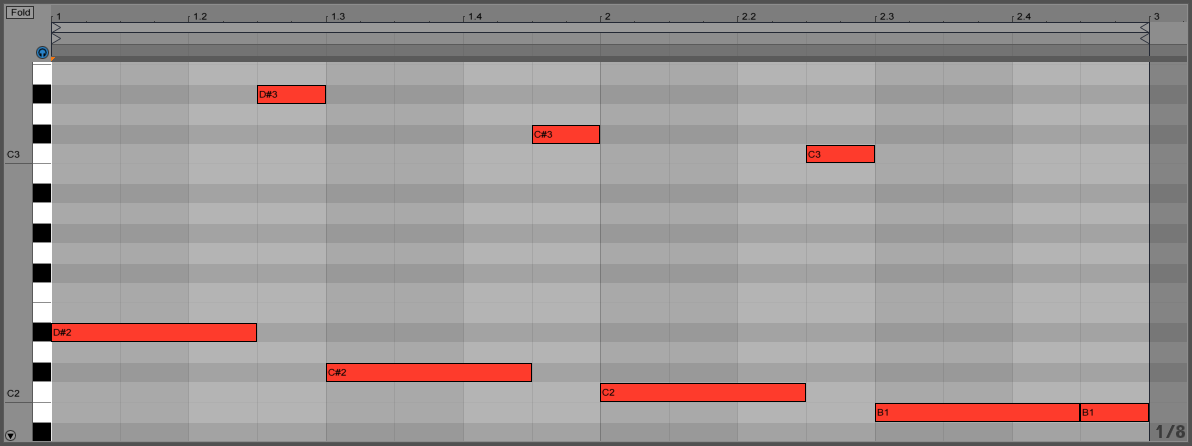
This is a super classic and deeply explored but never exhausted riff. It builds on the idea of something called a line cliché, when you ascend or descend chromatically against a single stationary chord, like in the “James Bond Theme,” for example.
The main harmony stays the same, but a line on top or below moves up or down chromatically.
+ Read more on Flypaper: “How John Williams Implies Modality Within Diatonic Harmony in ‘Yoda’s Theme’”
How This All Works
When we add the chords atop that bass line, notice one other evocative quality of this progression — the B♭ (which is the top-note voicing on three of the four chords) and the G♭ is present here in all four chords. Metaphorically, it’s as if someone is staying in one place while the other is walking away. The motion of the voices mimics the widening abyss between the two of them.

Download: “Glory Box” Bass + Chords MIDI
There are a few cool moves happening here that all stack up to make this bass line and top-note fit:
Descending Into Inversion
The E♭ minor falls down to G♭/ D♭, keeping that B♭ in the top note, but allowing the bass line to descend mournfully away.
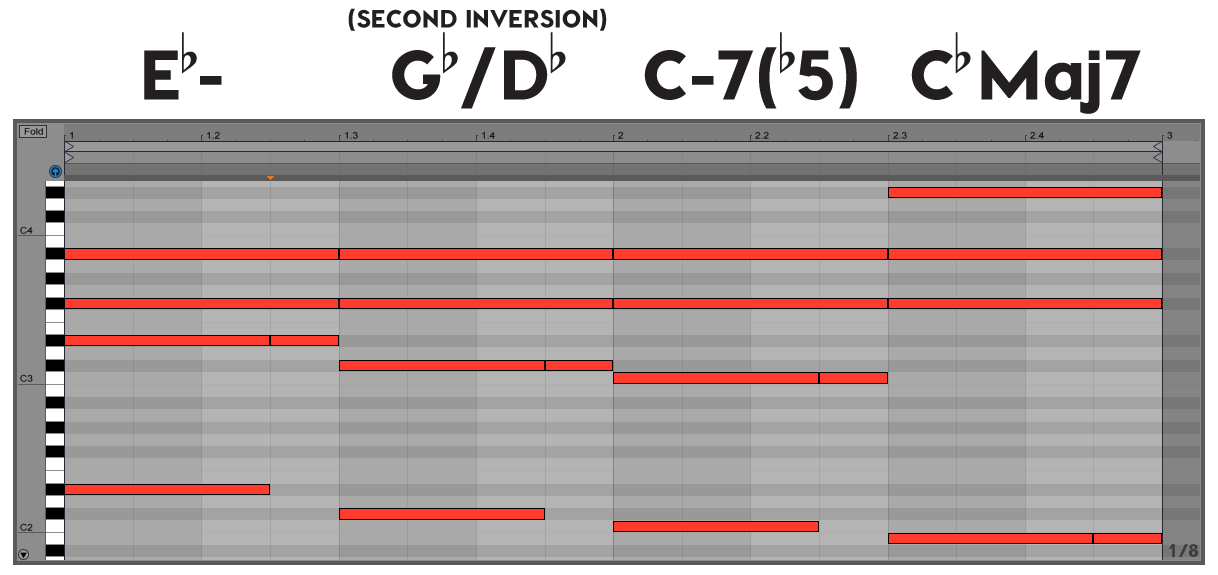
The Modal Interchange Moment
(Modal interchange is when you temporarily borrow a chord from a different key or mode. It’s something we go into much more detail about in the course. To learn more, subscribe to the full advanced harmony course here).
That C–7♭5 chord is borrowed from the key of D♭ major, or, in this case, the mode E♭ Dorian. Given the fact that the chord is dictated by the chromatic motion of the bass, this chord feels almost like accidental interchange. We call it such in analysis, but it’s simply responding to the chromatic riff. It allows for a beautifully tense moment, almost as if a question is poised in the air.
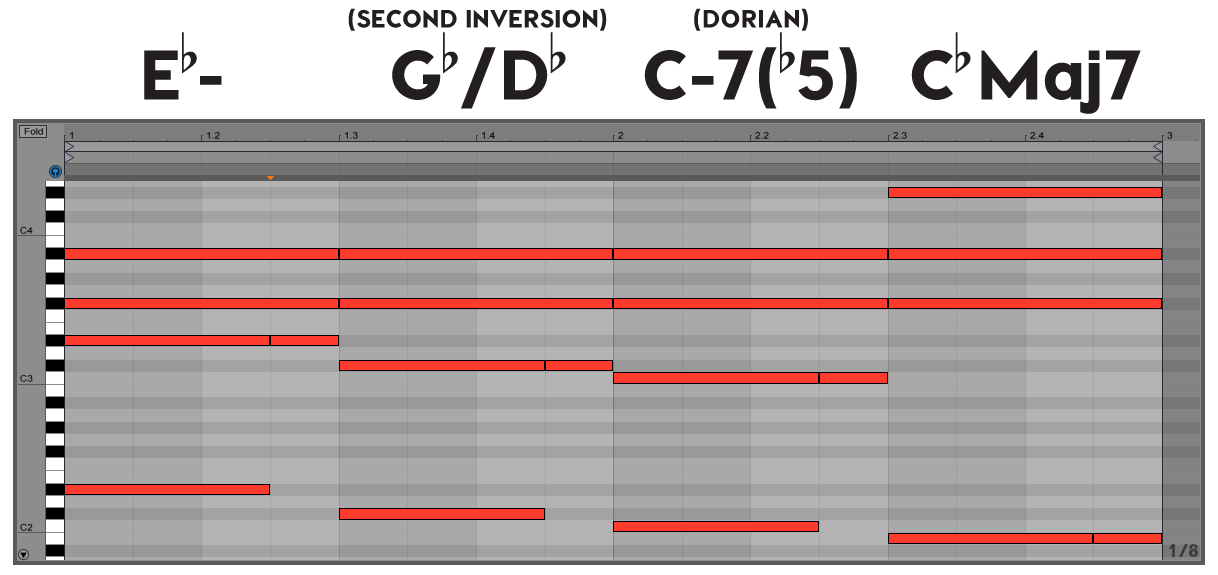
The Chromatic Modal Interchange Resolution
From the C–7♭5 chord, only the bass line moves down to the B natural, building that beautifully coarse BMaj7 chord. In this key, we analyze it with the enharmonic (same-sounding note, spelled a different way) root note of C♭.
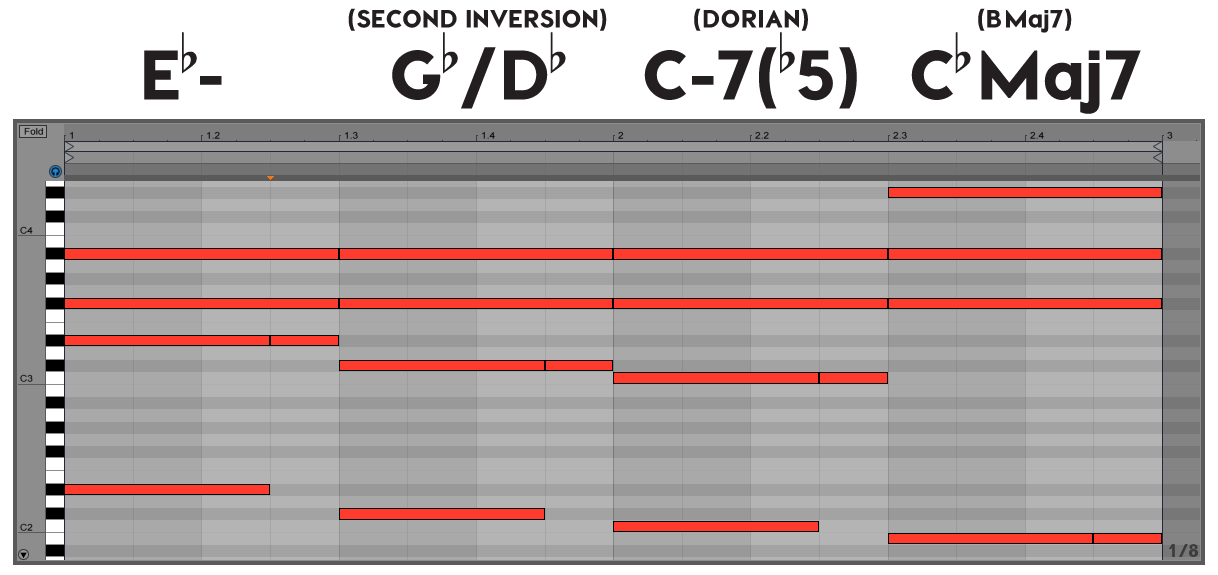
All of this beautiful dissonance, contrast, and tension is built around that one, simple, chromatic bass motion.
Chromaticism as Passing Chords
This song has introduced us to one of the most common uses of chromaticism you’ll hear in the world, as passing chords between two diatonic chords. Basically, a passing chord is any non-diatonic chord that connects two diatonic chords. In this case, all the chords of the progression are diatonic to E♭ natural minor except for that C-7(♭5).
The simple reason we mention this is because passing chords gives us another tool to complicate our progressions. We can take any classic diatonic progression and add chromatic passing chords between the chords to complicate it, keeping our voice leading in mind as we do so.
Don’t stop here!
Continue learning about music theory, composition, arrangement, harmony and chord progressions with Soundfly’s in-depth online courses, like Unlocking the Emotional Power of Chords, Introduction to the Composer’s Craft, and The Creative Power of Advanced Harmony. Subscribe for unlimited access here.
